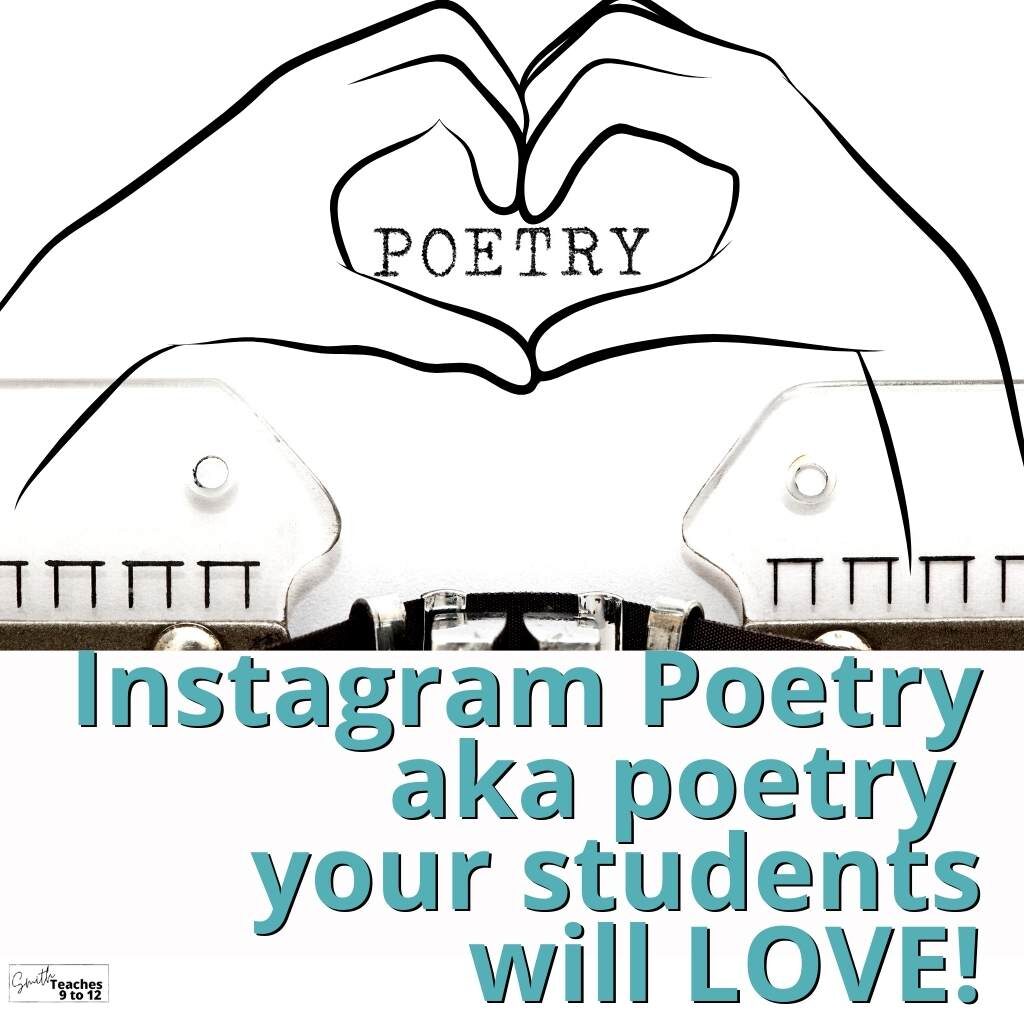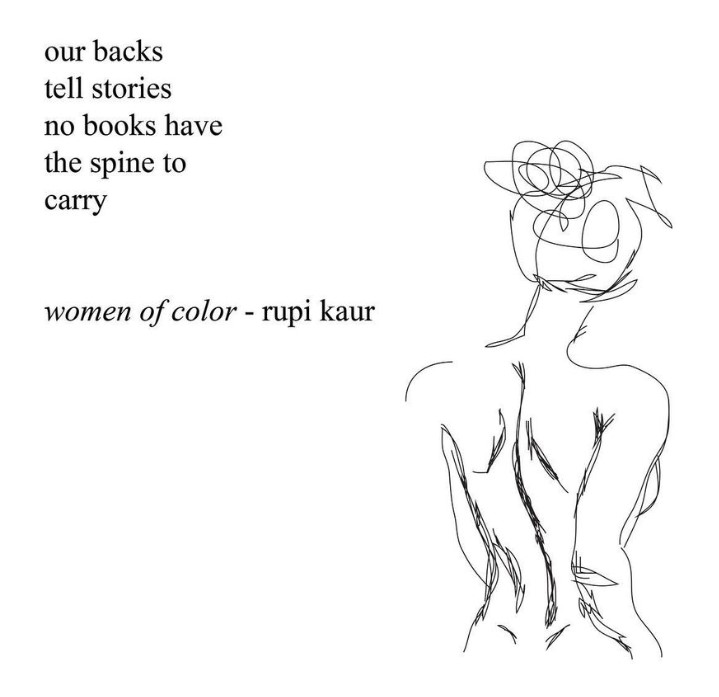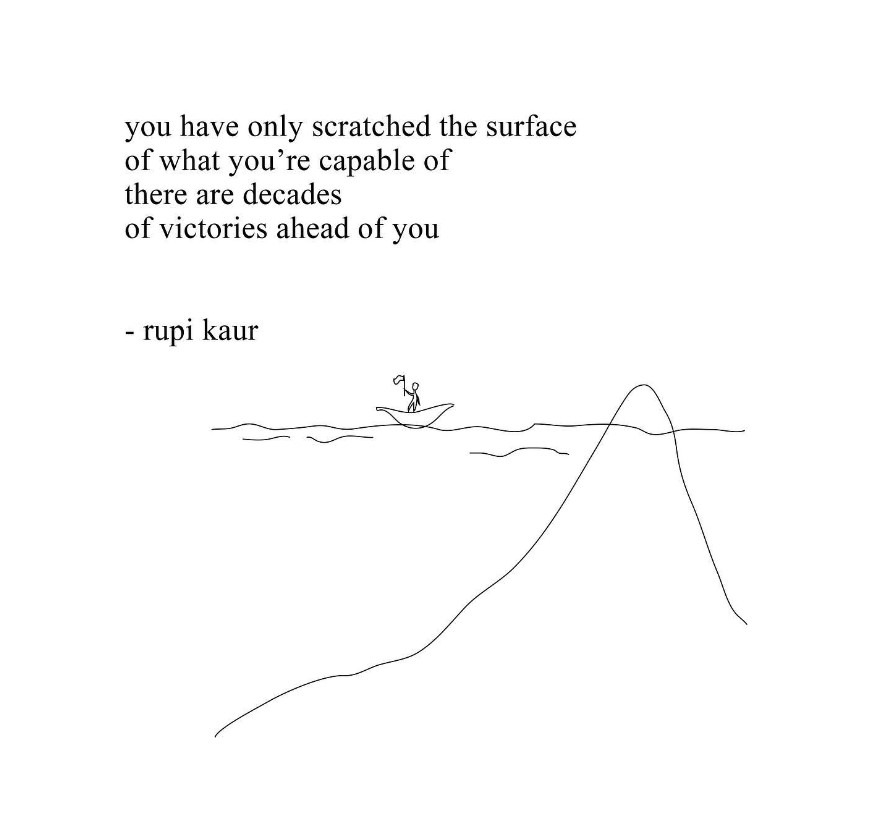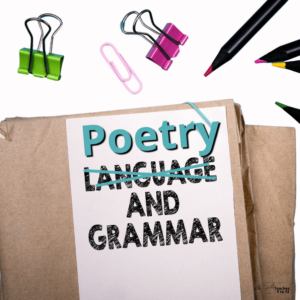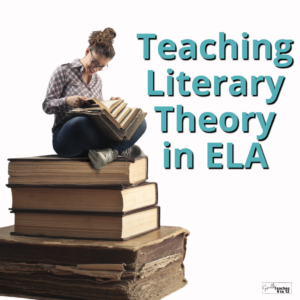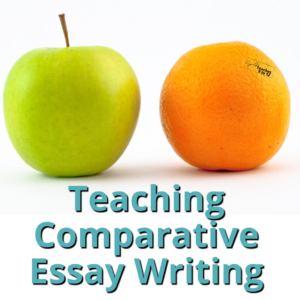Sharing is caring!
Are you looking for your students to love poetry? This can be a tall task but take heart because Instagram poetry – aka instapoetry – might just be the answer!
With short, concise poems featuring attractive fonts, layouts, and a well-recognized style of line drawings, poems on social media have come a long way. From the early days of Tumblr and Twitter to the more common incarnations of Instagram, poetry online is accessible, relatable, and honest. All things that high school students in English will love!
Why Instagram Poetry?
There are a ton of reasons that Instagram poetry is a great addition to your poetry plans. Here are my top 3 reasons to use Instagram poetry in your lesson plans.
- Freshen up a unit – If you’re teaching poetry and only focused on the classics then students are likely disengaged.
- Replace or expand beyond music and lyrics – I love song lyrics but sometimes they are long and repetitive. Most Instagram poetry is short but packed with emotion, mood, and visual imagery (aside from actual images that accompany posts).
- Diverse contemporary voices – There are so many instapoetry examples from poets across the world. Adding in different experiences and voices is quite easy with Instagram poetry.
6 Suggested Poetry Instagram Accounts
Instagram poetry is easy to find but it’s often difficult to find good instapoetry examples. Here are six that I use in my classroom with great success.

Rupi Kaur – One of the most prolific and popular on Instagram (she has 4.5 million followers!), Kaur is considered one of the originators of instapoetry. She has several collections with milk and honey as her first. Her work is notable for its brevity, its focus on female empowerment, as well as simple line drawings.
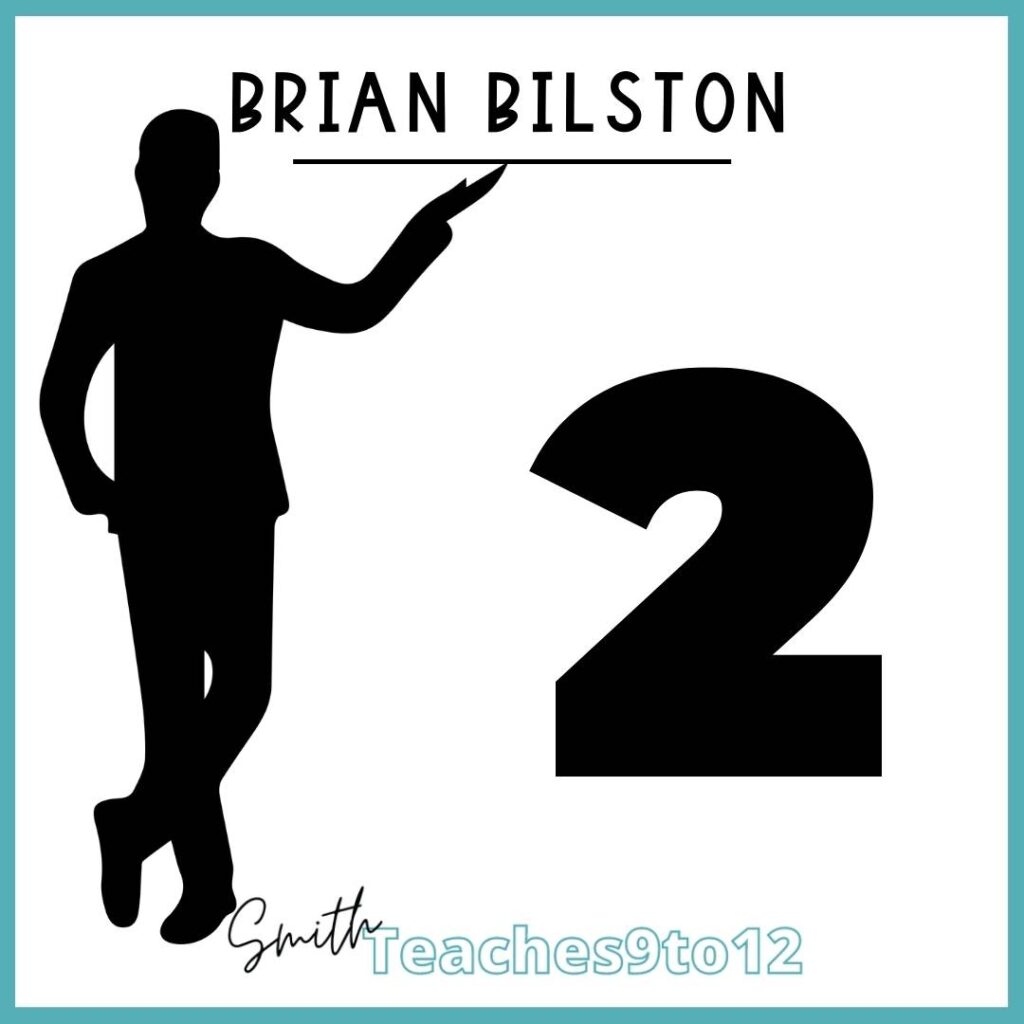
Brian Bilston – A British writer who never shows his face online; mostly because it was revealed a few years ago that Brian Bilston is a pseudonym. His work is funny and taps into popular ideas in culture. One of his poems “Refugees” circulated widely a few years ago as a palindrome poem that has one message when reading from top to bottom and a different message when reading from bottom to top.
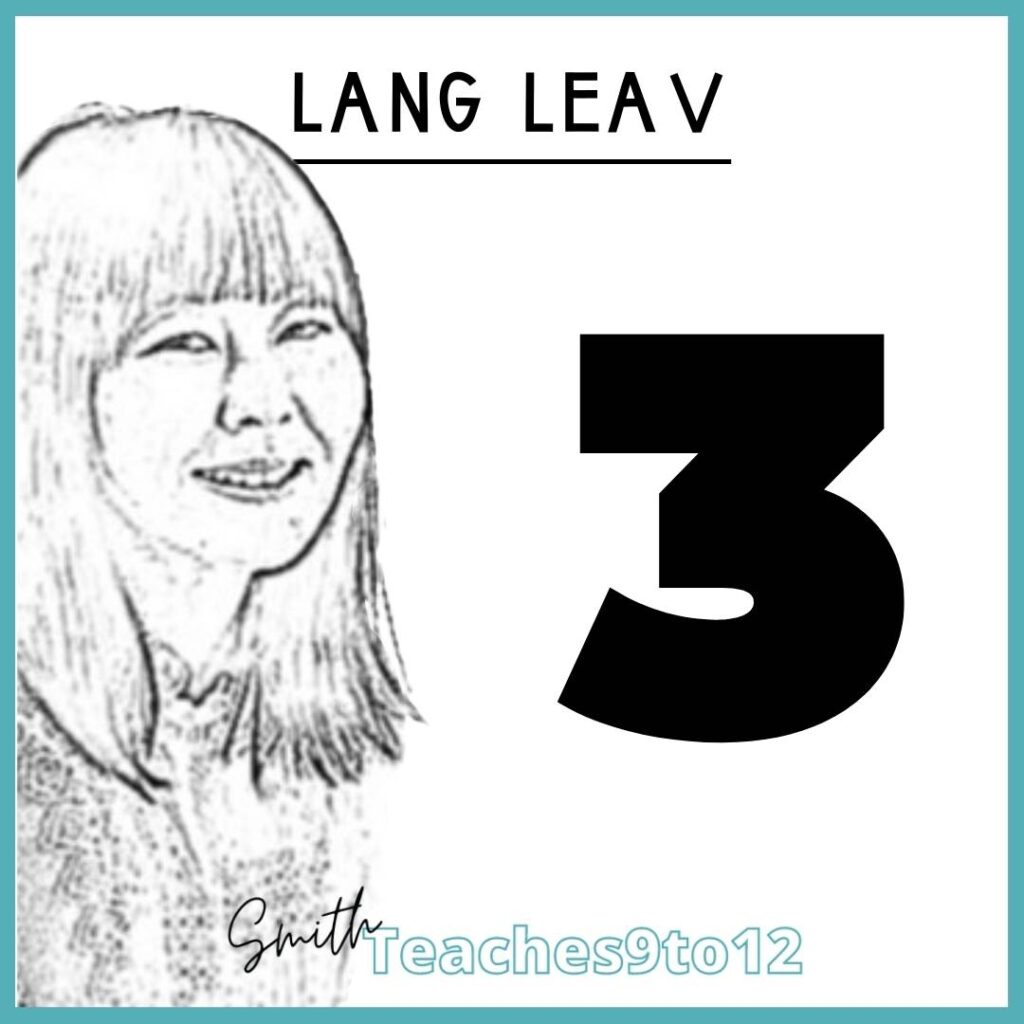
Lang Leav – Australian Lang Leav self-published before gaining a publishing deal and being lauded by the New York Times. Her work focuses on relationships, feelings, and random things related to poetry too. Of all the poets on the list, Leav’s most often resembles traditional poetry in its structure since it’s a bit longer than usual instapoetry examples.
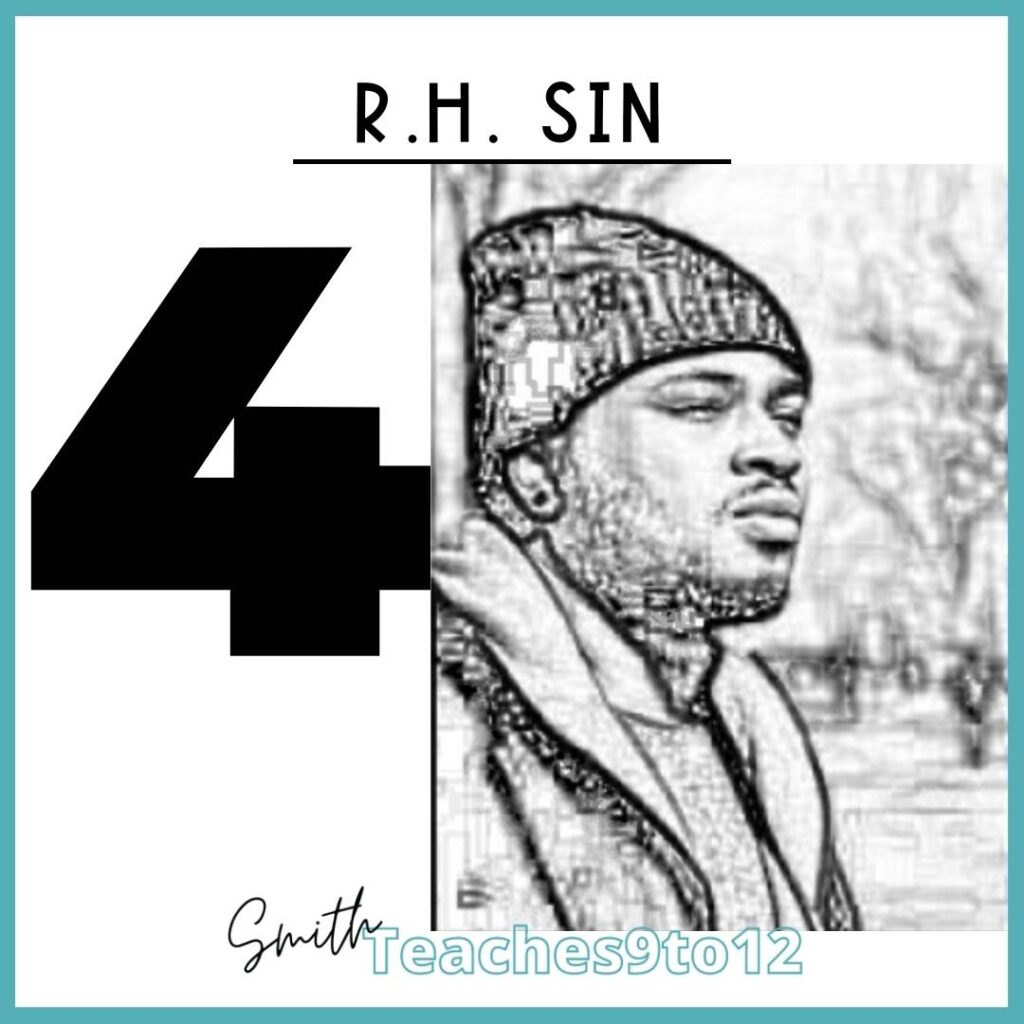
r.h. Sin – American Reuben Holmes is a New Times bestselling author whose writing focuses on healthy relationships. Known online as r.h. Sin, he is quoted as saying that he writes messages he wishes his mother, sisters, and female friends could hear more often from men. His focus on relationships, healthy masculinity, and sharing truthful emotions is quite popular online with his nearly 2 million followers.
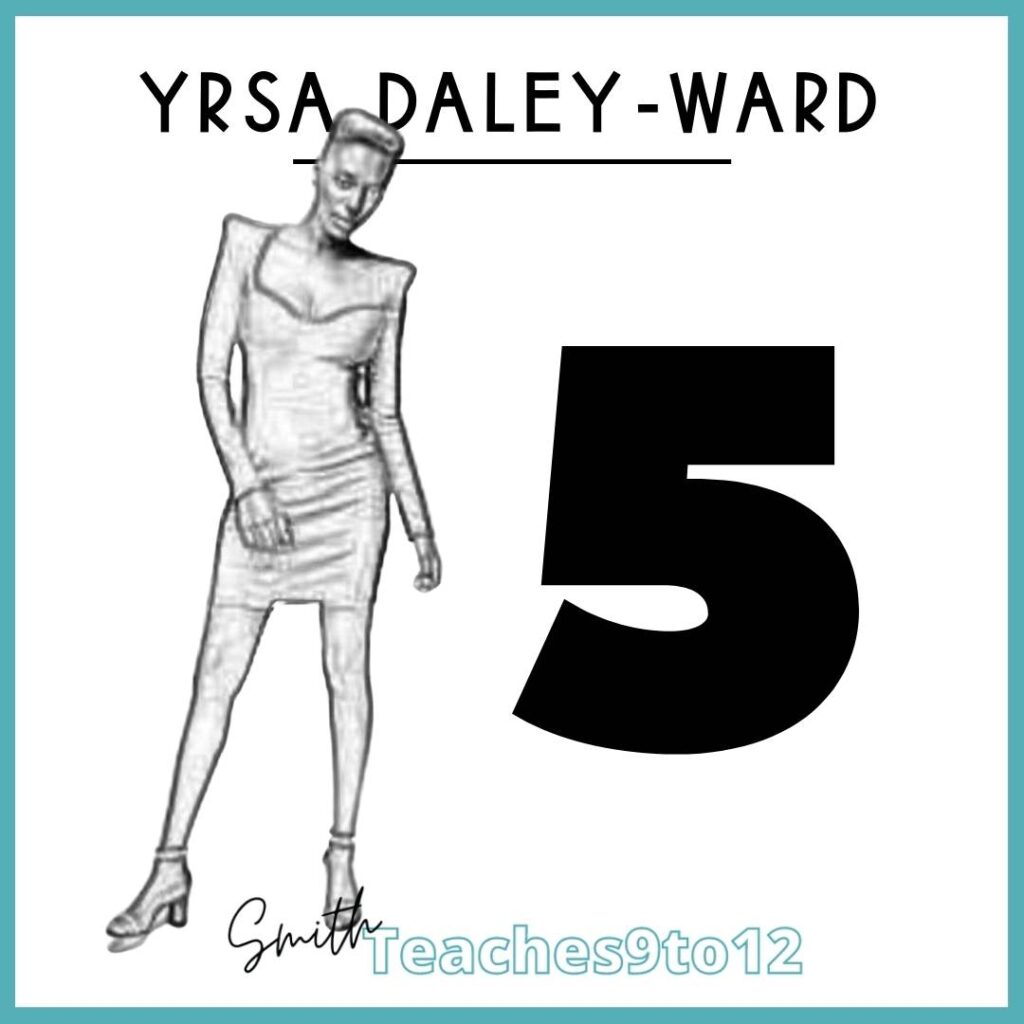
Yrsa Daley-Ward – British-Nigerian poet, actress, and model, Yrsa Daley-Ward began writing as a teen. She published her first collection in 2014 to great acclaim. She has continued to post often on social media, slowly gaining a following and opportunities for more publishing.
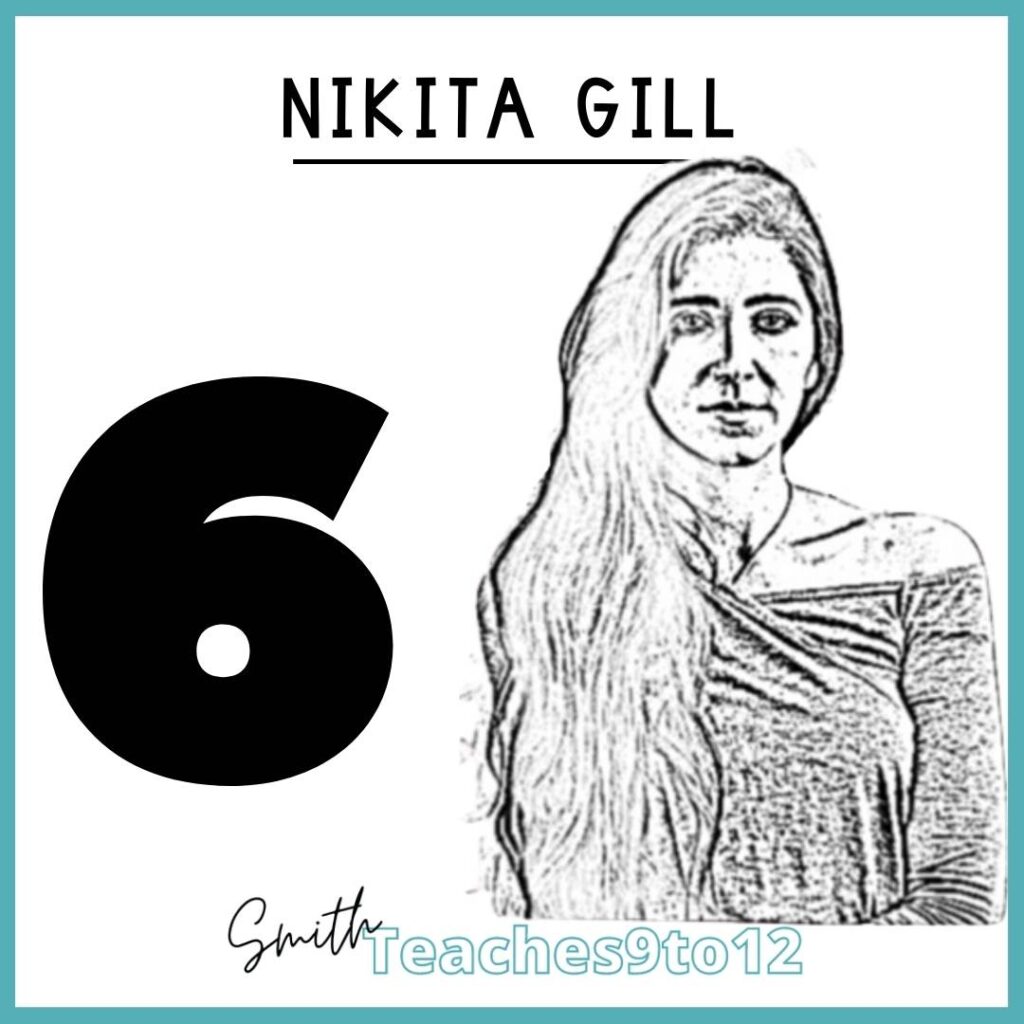
Nikita Gill – Gill, like Rupi Kaur, is well-known as an instapoet with a far-reaching audience on both Instagram and Twitter. She not only shares her poetry online, but she often shares poems that move her, giving space to other writers both well-known and “yet-to-be-discovered” ones. She has published several poetry collections and one of the best is Fierce Fairytales, in which she rewrites classic fairy tales.
And if you’re wondering about how easy it is to become an instapoet check out this article from Vice with a writer who masqueraded as a poet for a month online. This would make a great intro article to discuss if instapoetry is poetry! (Note: There is one f-word in the article.) Use the article as a topic for debate about poetry – read more about debating poetry in this post.
Lesson Idea for Instagram Poetry
There are two routes you could take with instapoetry – traditional or slightly unconventional.
The traditional route involves finding poems and analyzing them using traditional methods such as a TP-CASTT graphic organizer or looking at the usual elements of figurative language, rhyme, rhythm, etc. to establish meaning.
However, a slightly unconventional approach is an ideal option considering Instagram poetry itself is a bit unconventional. Instapoetry doesn’t often use a traditional structure, form, rhyme scheme, rhythm, or even include that many figurative language devices. Plus, Instapoetry is so personal that it’s worth examining the lives of the poets a bit more before diving into their work.
Since the poets have a presence online students could review their Instagram feeds and bios to determine more about the poet. Then spend some time with the poems themselves to examine the imagery and structure as well as the overall tone and mood of each poem.
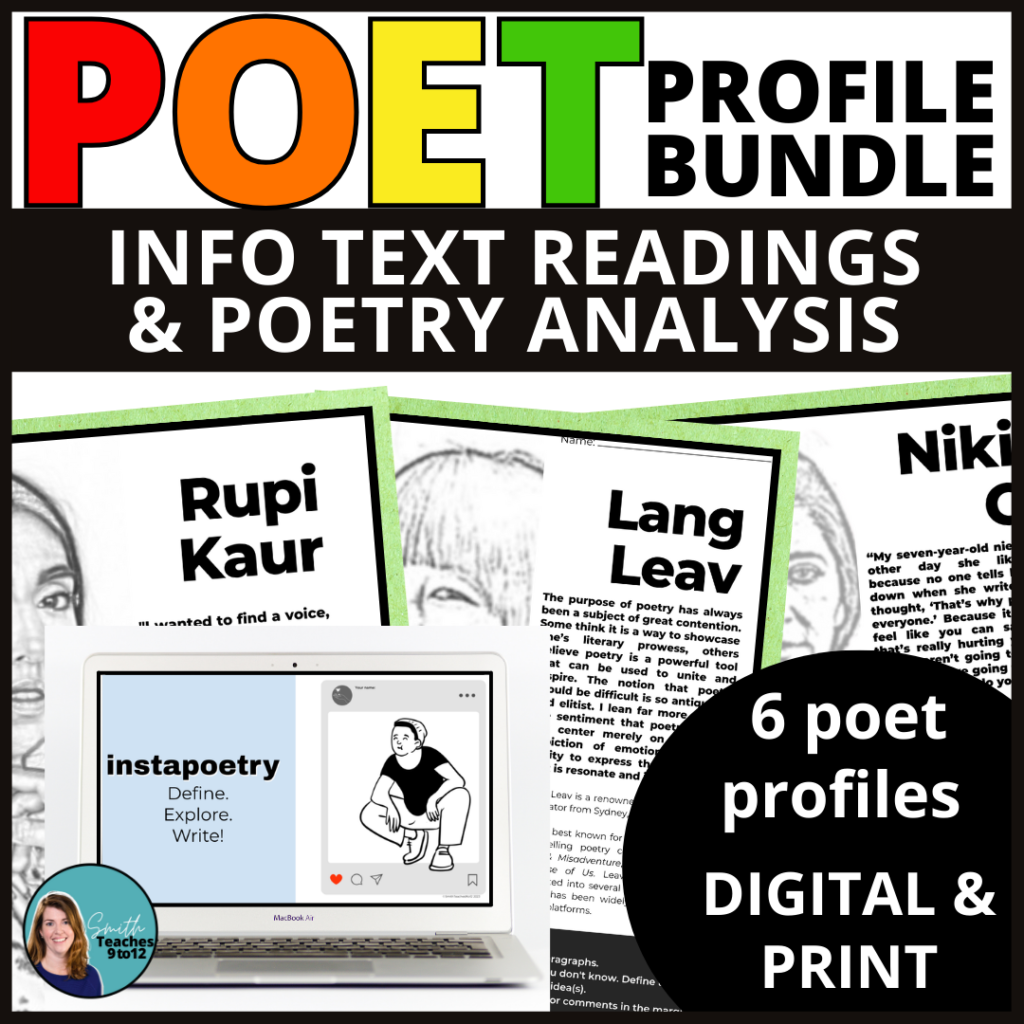
Another option is this set of nonfiction poetry profiles that students can explore as info texts. Each profile is approximately 350 words with a lexile level of 1010 and includes highlights about the poet’s personal and professional lives. With Common Core-aligned tasks such as vocabulary, summarizing and main idea, this set is an ideal option for your classroom. Extend the lesson with analysis of instapoetry with guiding questions, and then have students write their own instapoetry!
With the set of profiles you can create literature circle groups where different small groups focus on one specific poet and their poetry.
Another option is to use these profiles as a jigsaw. Students join an ‘expert’ group to study one poet and their work, before moving to a ‘home group’ where they can share what they’ve learned. This provides students with an overview of several poets rather than just one.
And finally, you could feature a different poet throughout the year using the profiles as part of an informational text or nonfiction reading unit! Or, with National Poetry Month you could feature different poets each week of April.
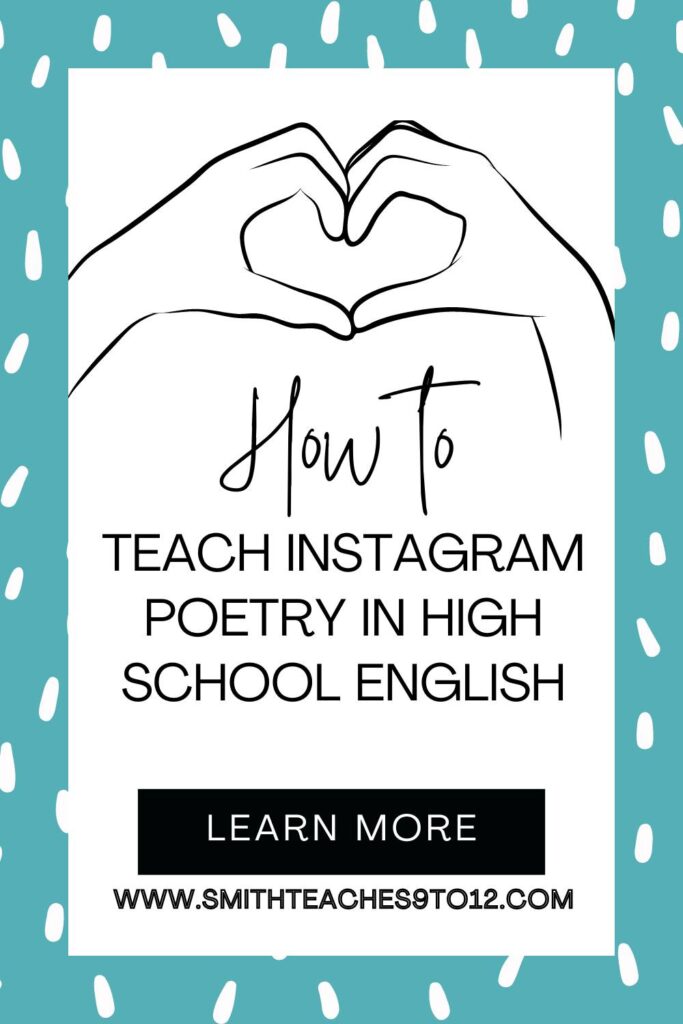
Final Words on Instagram Poetry
For my students, Instagram poetry has been a gateway to more profound analysis of poetry (instapoetry and more traditional poetry too). Because of instapoetry’s simplicity and, quite often, its brevity, it’s another option that is less intimidating to students.
Students are willing to take some risks in pointing out imagery, talking about structure, and sharing their thoughts on the mood, tone, and message of instapoems. Gaining confidence with these aspects has meant they’ve been able to transfer their skills to other poems too!
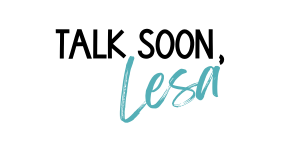
Related posts:

